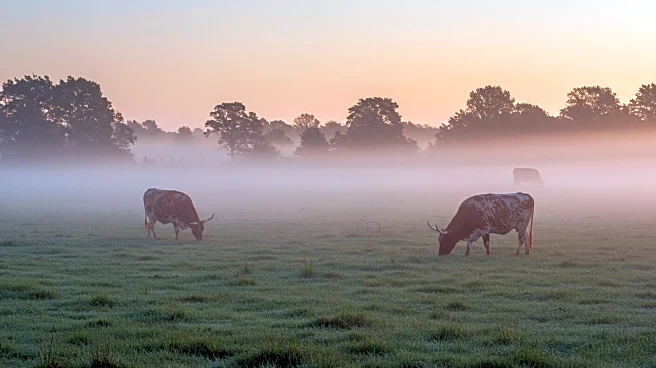What's Happening?
U.S. cattle ranchers are starting to rebuild their herds after a prolonged drought that significantly reduced cattle numbers. Ranchers in states like Nebraska, South Dakota, and Texas are retaining heifers for breeding rather than sending them to slaughter, marking the beginning of herd expansion. The drought had led to a decrease in pasture land and increased feed costs, causing the national cattle inventory to drop to its lowest since 1951. Improved weather conditions and expectations of high cattle prices are motivating ranchers to expand their herds, which is crucial for the beef industry.
Why It's Important?
The rebuilding of cattle herds is vital for stabilizing beef prices and ensuring supply for U.S. consumers. The drought-induced reduction in cattle numbers had driven up beef prices, affecting both consumers and meatpackers. As ranchers begin to expand their herds, it signals potential relief for consumers facing high beef costs and for meatpackers struggling with expensive cattle purchases. The cattle industry is a significant part of U.S. agriculture, and its recovery is essential for economic stability in rural areas. The expansion also reflects broader agricultural trends, including improved weather conditions and increased feed availability.
What's Next?
The herd rebuilding process is expected to take several years, with significant impacts on beef supply and prices anticipated by 2028. Ranchers will continue to monitor weather conditions and market prices to guide their expansion efforts. The U.S. Department of Agriculture and other stakeholders may provide support and resources to facilitate the rebuilding process. As the cattle industry recovers, there may be increased competition among meatpackers for cattle, potentially leading to strategic shifts in the industry. The rebuilding efforts will also test consumer demand for beef as prices fluctuate during the expansion period.













